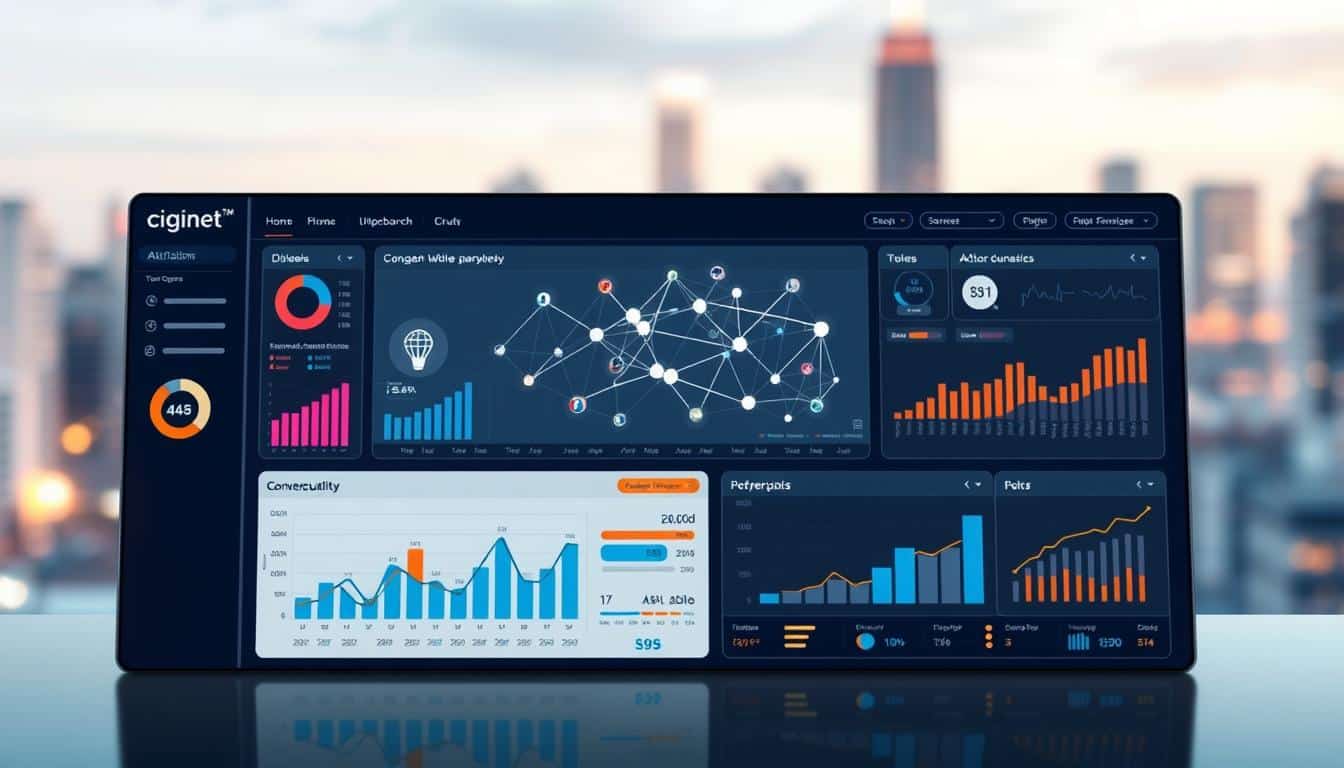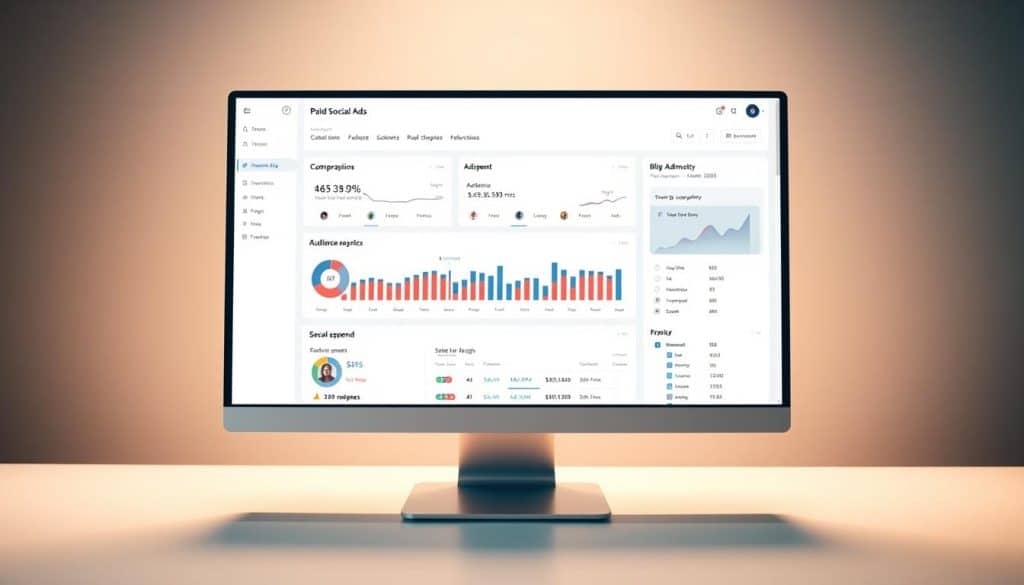What if your most celebrated marketing campaign isn’t actually driving the conversions you think it is? Many businesses celebrate their flashy social media ads or viral content, but they’re often missing the complete picture of what truly converts customers.
Today’s customer journey is more complex than ever. People interact with brands across multiple channels before making a purchase decision. This complexity makes it challenging to determine which marketing efforts deserve credit for driving results.
We believe every marketing dollar should work hard for your business. That’s why we’ve created this comprehensive guide to help you understand how different touchpoints contribute to your success. Our approach provides a systematic framework for assigning conversion credit accurately.
This resource will transform how you measure marketing performance. We’ll walk you through everything from basic concepts to advanced implementation strategies. You’ll learn to move beyond guesswork into precise, measurable analysis that drives tangible business growth.
Key Takeaways
- Marketing attribution provides a clear framework for understanding which channels drive conversions
- Modern customer journeys involve multiple touchpoints across different platforms
- Proper attribution helps optimize marketing budgets for maximum return
- Different attribution models offer unique perspectives on conversion paths
- Implementation requires careful planning and the right analytical tools
- Canadian market considerations may influence your attribution strategy
- Data-driven decisions replace guesswork in marketing optimization
Introduction to Marketing Attribution Models
Many businesses mistakenly give all credit to the last touchpoint, missing the full story of how customers convert. We define marketing attribution as the strategic framework that reveals which interactions truly drive results. This approach moves beyond simplistic measurements to provide a complete picture of performance.
The Role of Attribution in Driving Conversions
Attribution plays a crucial role in understanding what moves prospects toward purchase decisions. It provides visibility into the entire customer journey, helping identify which efforts deliver real impact. This clarity enables smarter decisions about where to focus resources.
Without proper attribution, marketers risk overlooking important touchpoints. Activities like email marketing or remarketing often contribute significantly to conversions. Yet they may be ignored when using basic measurement approaches.
“The true value of marketing lies not in the last click, but in understanding the entire path that brought the customer to you.”
Understanding the Importance for Agencies
For agencies managing multiple client campaigns, attribution becomes particularly vital. Clients expect clear answers about which marketing efforts are working. Proper attribution enables accurate reporting and demonstrates clear return on investment.
We help agencies avoid common pitfalls like scaling down effective top-of-funnel activities. Some channels may appear successful but merely capture existing demand. Attribution reveals the true drivers behind conversions.
| Attribution Approach | Key Focus | Best For |
|---|---|---|
| First-Click | Initial awareness touchpoints | Top-of-funnel analysis |
| Last-Click | Final conversion actions | Bottom-funnel optimization |
| Multi-Touch | Complete journey mapping | Comprehensive strategy |
The benefits for agencies are substantial. Attribution helps identify high-performing channels and optimize advertising spend. It also reveals gaps in the customer journey that need attention.
For longer-term strategies like SEO, understanding attribution is especially crucial. The full impact may take months to materialize. Proper attribution ensures these efforts receive appropriate credit.
The Customer Journey and Conversion Paths
The modern buying process resembles a complex roadmap rather than a straight line to conversion. Customers interact with brands through various touchpoints before making their final decision. Understanding this complete journey is essential for effective marketing strategy.
We define touchpoints as every interaction a customer has with your business throughout their journey. These interactions occur across multiple channels and platforms. Each touchpoint represents an opportunity to influence the customer’s perception.
Identifying Key Touchpoints Along the Journey
A conversion path shows the specific sequence of touchpoints a customer navigates before completing a conversion action. Each path can look different depending on the customer’s unique research process. Some customers convert quickly while others require multiple interactions over extended periods.
Common touchpoints include social media engagements, website visits, email interactions, and paid advertising exposures. Customer service contacts and organic search results also play important roles. Each interaction serves a distinct purpose in moving customers toward conversion.
Mapping these touchpoints helps identify which interactions have the greatest impact. This understanding enables more strategic resource allocation. It also reveals gaps or friction points in the overall customer experience.
By analyzing conversion paths, we can identify common sequences that lead to successful outcomes. This reveals how different channels work together throughout the journey. The insights gained form the foundation for selecting the most appropriate attribution approach.
Deep Dive into Analytics & Attribution
Understanding which marketing channels truly drive results requires more than just surface-level metrics. We explore how proper measurement frameworks reveal the complete picture of campaign performance.
Leveraging Data for Marketing Success
Effective marketing decisions depend on accurate data interpretation. Attribution frameworks help answer critical questions about channel value. They provide approximate understanding rather than perfect reality.
Marketing channels rarely operate in isolation. One channel’s performance often influences others. Robust measurement accounts for these synergistic effects.
Before implementing any attribution approach, ensure proper tracking. Conduct a thorough audit of your campaign tagging strategy. Use UTM parameters for all marketing initiatives.
Google Analytics requires medium and source tags at minimum. Campaign tags are recommended for tracking specific efforts. Without proper tagging, direct traffic may appear inflated.
Analytics tools provide the foundation for meaningful insights. They track customer journeys when configured correctly. This enables confident resource allocation decisions.
The right approach transforms how you measure marketing impact. It moves beyond guesswork to data-driven strategy optimization.
Overview of Common Attribution Models
Choosing the right framework to measure marketing success starts with understanding the available attribution models. We break down the primary options to help you see which one fits your business goals.
There are six main types of models to consider. You can also create custom ones for unique needs.
Single-Touch vs. Multi-Touch Models
Single-touch models give all conversion credit to one touchpoint. They are simple to use and understand.
Multi-touch models spread credit across several interactions. This approach better reflects complex customer journeys.
Examples: First Interaction, Last Interaction, and Linear Models
The First Interaction model credits the initial customer contact 100%. It is great for measuring brand awareness efforts.
Last Interaction assigns full credit to the final touchpoint before a sale. This is the default option in many platforms.
Linear attribution splits credit equally among all touchpoints. It provides a balanced view of each channel’s role.
| Attribution Model | Credit Assignment | Best Use Case |
|---|---|---|
| First Interaction | 100% to first touchpoint | Short sales cycles, awareness campaigns |
| Last Interaction | 100% to last touchpoint | Direct response, final conversion analysis |
| Linear | Equal credit to all touchpoints | Simple multi-touch overview, client reporting |
Each model offers a different perspective. The best option depends on your specific customer journey and goals.
Exploring Multi-Touch Attribution Approaches
Multi-touch frameworks recognize that successful conversions rarely happen through isolated interactions. These advanced approaches distribute value across multiple customer engagements rather than focusing on single moments.
We help businesses understand how different marketing efforts work together. This perspective reveals the true collaborative nature of modern customer journeys.
How Multi-Touch Models Spread Conversion Credit
The Time-Decay model assigns higher value to interactions closer to conversion. It operates on a 7-day half-life principle. Recent touchpoints receive significantly more credit than earlier ones.
Position-Based attribution takes a balanced approach. It gives 40% credit to the first touchpoint for awareness creation. Another 40% goes to the final interaction that seals the deal.
The remaining 20% distributes among middle touchpoints. This U-shaped model acknowledges both endpoints while valuing the complete journey.
Last Non-Direct Click offers a unique perspective. It assigns full credit to the last non-direct interaction before conversion. This approach eliminates direct traffic from receiving undue credit.
Each multi-touch model reflects different philosophies about customer behavior. The choice significantly impacts which marketing channels appear most valuable. Businesses with longer sales cycles benefit greatly from these nuanced insights.
Benefits and Drawbacks of Attribution Models
No single attribution method provides a perfect solution for every business scenario. Each framework offers unique advantages while presenting specific limitations that marketers must understand.
We help businesses navigate these trade-offs to select the most appropriate approach. The right choice depends on your specific customer journey and marketing goals.
Advantages of Using Rule-Based and Data-Driven Models
Rule-based models offer transparent credit assignment that marketers can easily understand. They align well with specific business priorities like awareness campaigns or conversion-focused activities.
Data-driven approaches use algorithms to assign credit based on actual observed impact. This provides more accurate insights into which touchpoints truly drive conversions.
Simple models work well for straightforward customer journeys. Complex models better reflect multi-touch interactions across longer sales cycles.
Common Limitations and Challenges in Attribution
Single-touch models often overlook important touchpoints that contribute to conversions. They may provide misleading recommendations for resource allocation.
Equal-weight models assume all interactions contribute equally to outcomes. In reality, some touchpoints have greater impact than others.
Custom models require extensive data and sophisticated analytical capabilities. They can be challenging to implement without dedicated resources.
| Model Type | Key Benefit | Primary Limitation |
|---|---|---|
| First Interaction | Simple for short cycles | Ignores later touchpoints |
| Last Interaction | Clear final conversion focus | Overlooks foundation-building |
| Linear | Balanced multi-touch view | Equal weighting may mislead |
| Time-Decay | Values recent interactions | Underweights early touches |
| Position-Based | Acknowledges journey endpoints | May underestimate middle |
All attribution frameworks represent approximations rather than perfect reality. Marketers should use them as directional guidance while validating findings against actual business outcomes.
Implementing Attribution Strategies in Digital Marketing
Effective implementation begins with meticulous tracking across all marketing initiatives. We focus on building a solid foundation that captures every customer interaction accurately.
Proper campaign tagging using UTM parameters is essential for success. These tags help identify where traffic originates and how different channels contribute to conversions.
The five key UTM parameters provide comprehensive tracking capabilities. Medium and Source are required fields that define traffic type and origin. Campaign identifies specific marketing efforts, while Content and Term offer additional granularity.
Most modern email platforms integrate seamlessly with measurement tools. However, we always verify this integration works correctly. Email campaigns often represent significant traffic sources that require accurate tracking.
Redirects between clicks and final destinations can strip away valuable tracking information. This technical issue causes paid, email, or social traffic to appear as direct visits. We implement solutions to preserve referral data throughout the customer journey.
Standardized naming conventions across all platforms ensure consistency. Our team creates documentation that everyone follows for uniform campaign tagging. This approach maintains data integrity across multiple marketing channels.
Implementation represents an ongoing process rather than a one-time setup. Regular audits and reviews keep your strategy aligned with evolving business goals. Continuous optimization based on insights drives meaningful improvements.
Attribution in Google Analytics 4
Google Analytics 4 (GA4) marks a significant leap forward in how we understand marketing influence. This platform offers more sophisticated attribution model options and greater flexibility than its predecessor.

We guide you through the three primary model categories available. These include the advanced Data-driven approach, Cross-channel rule-based options, and the Ads Preferred model.
Understanding GA4's Algorithmic and Rule-Based Models
The Data-driven model is GA4’s default selection. It uses an algorithm and historical data to assign credit based on actual impact.
This approach considers factors like device types, ad interactions, and time from conversion. It can analyze over 50 touchpoints, providing a much deeper view.
You can change these settings under Admin → Attribution settings. Here, you select your Reporting attribution model and decide which channels receive credit.
We recommend choosing “Paid and organic channels” for a more accurate picture. This prevents over-crediting Google Ads and acknowledges all contributing efforts.
Remember, different standard reports use different models by default. Understanding this ensures you interpret your data correctly for informed decisions.
Customizing Attribution for Canadian Markets
The Canadian business landscape presents specific considerations that influence how attribution models should be customized. While fundamental principles remain consistent, market-specific factors shape implementation strategies for local companies.
Canadian businesses operating in bilingual environments require careful tracking setup. Separate UTM parameters for English and French campaigns enable analysis of how different language segments interact with marketing channels. This approach reveals which communication strategies drive conversions most effectively.
Customer behavior patterns often differ from US markets. Canadian consumers may exhibit unique search habits and channel preferences. Analyzing your specific customer journey data ensures attribution patterns reflect local realities rather than generic assumptions.
Seasonal patterns like extended winter months and Boxing Day shopping influence how customers engage with marketing channels over time. These factors can affect which attribution approach provides the most accurate representation of channel contribution.
Canadian privacy regulations impact tracking capabilities. Businesses must ensure their attribution implementation complies with local laws while capturing sufficient data for meaningful analysis. This balance is crucial for effective marketing measurement.
We recommend Canadian businesses analyze their market data to understand typical consideration periods. If customers typically have longer research cycles, multi-touch models become more valuable for capturing the complete conversion path.
Optimizing Marketing ROI Through Attribution
Smart budget allocation separates successful marketing campaigns from wasteful spending. We help businesses transform attribution insights into concrete financial improvements. This approach moves beyond theoretical understanding to practical revenue growth.
Proper attribution provides the foundation for optimizing your marketing return. It reveals which channels truly drive conversions rather than just capturing final clicks. This clarity enables smarter decisions about where to invest your marketing budget.
Tracking Metrics and Adjusting Marketing Spend
We focus on key performance indicators that matter most for business growth. These include conversion rates by channel and revenue attributed to each touchpoint. Customer acquisition cost adjusted for proper credit allocation provides crucial insights.
Attribution analysis helps identify undervalued channels that deserve more investment. For example, SEO efforts often contribute significantly to conversions without receiving last-click credit. Recognizing these contributions prevents cutting effective long-term strategies.
Budget adjustments should reflect actual performance data rather than assumptions. We recommend regular reviews of attribution reports to guide spending decisions. This ongoing process ensures your marketing money works hardest where it delivers real results.
- Channel performance analysis reveals true conversion drivers
- Budget reallocation based on attributed revenue rather than vanity metrics
- Cross-channel synergies that boost overall conversion rates
- Customer journey gaps where additional touchpoints could improve results
Optimizing ROI through attribution is not a one-time exercise. It requires continuous testing and adjustment based on evolving customer behavior. This approach ensures your marketing investments consistently drive maximum return.
Real-World Case Studies in Marketing Attribution
The true value of attribution frameworks becomes evident when examining actual campaign performance data. We’ve gathered compelling examples that demonstrate how proper modeling transforms marketing decisions.
Case Study: Enhancing Conversion Rates with Data-Driven Insights
CXL’s experience provides a powerful example of attribution’s impact. Their initial analysis using last-click modeling showed community and referral traffic delivering minimal value.
This led to conclusions that these channels weren’t worth continued investment. However, exploring different attribution approaches revealed a different story entirely.
Multi-touch models and sophisticated Markov-chain analysis showed these “low-value” sources played crucial roles in early customer journey stages. They assisted conversions that later appeared as direct traffic.
| Attribution Model | Community Traffic Value | Referral Source Impact |
|---|---|---|
| Last-Click | Low | Minimal |
| Multi-Touch | High | Significant |
| Markov-Chain | Critical | Essential |
“The channels we nearly abandoned became our most valued conversion assistants once we understood their true contribution.”
Success Stories from Leading Agencies
Leading agencies have transformed client relationships through attribution insights. One agency identified social media and email combinations producing 40% higher conversion rates.
Another reallocated budget from underperforming channels to high-impact touchpoints. This data-driven approach achieved 25% improvement in marketing efficiency.
These examples prove attribution drives real business outcomes. It helps brands optimize investments and agencies demonstrate clear ROI to clients.
Conclusion
Attribution modeling represents a fundamental shift from guessing to knowing what drives customer actions. We help businesses move beyond assumptions to data-driven clarity about their marketing performance.
Different attribution approaches offer unique perspectives on the customer journey. From simple first-click models to sophisticated multi-touch frameworks, each provides valuable insights. The right choice depends entirely on your specific business context and goals.
For Canadian companies, proper implementation requires understanding local market dynamics. We recommend starting with basic tracking and gradually advancing to more complex modeling. This practical approach ensures sustainable success.
Now is the time to transform how you measure marketing impact. Begin your attribution journey today to make smarter decisions and maximize your return on investment.
FAQ
What is a marketing attribution model?
A marketing attribution model is a set of rules that determines how credit for a conversion, like a sale or lead, is assigned to the various touchpoints in a customer’s journey. It helps us understand which marketing channels and campaigns are truly driving results, allowing for smarter budget allocation.
What is the difference between first-click and last-click attribution?
The key difference lies in which touchpoint receives full credit. First-click attribution gives 100% of the credit to the initial interaction that introduced a customer to your brand. Last-click attribution assigns all credit to the final touchpoint immediately before the conversion, such as a branded search or a retargeting ad.
Why should my business use a multi-touch attribution model?
We recommend multi-touch models because they provide a more holistic view of the customer journey. Unlike single-touch models that credit only one interaction, multi-touch approaches like linear or time-decay spread credit across all key touchpoints. This reveals how different channels, from social media to email, work together to influence a purchase decision.
How does Google Analytics 4 handle attribution?
A> Google Analytics 4 offers both rule-based and data-driven attribution models. The data-driven option uses machine learning to analyze all the paths in your conversion reports, assigning credit to each channel based on its actual measured impact. This provides a more accurate and flexible way to understand your marketing performance compared to older, rule-based methods.
What are the biggest challenges with marketing attribution?
Common challenges include tracking users across different devices, dealing with incomplete data, and the complexity of long sales cycles. Attribution can also struggle to account for offline interactions or the impact of brand-building efforts. That’s why we focus on using the right tools and models to create the clearest possible picture for your campaigns.
How can I use attribution data to improve my marketing ROI?
By analyzing attribution reports, you can identify which channels and campaigns are underperforming or driving the most valuable conversions. This data empowers you to make informed decisions, shifting your marketing spend away from less effective efforts and doubling down on the strategies that deliver the best return on investment.






